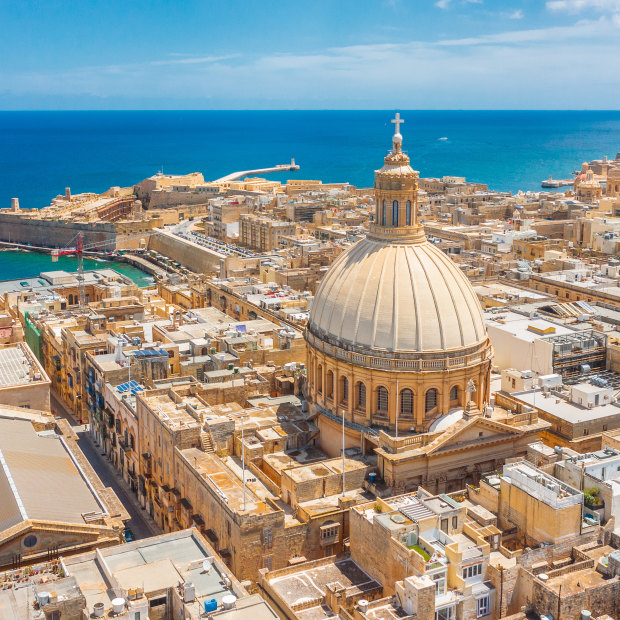
Valletta, Malta, remains a barely changed fortified Renaissance town.Credit: iStock
As travellers, what do we want from a stay in a capital, whether it be of a nation, a state or a province? Big monuments and museums, no doubt.
But beyond that, we surely hope to get a feel for the people via a capital’s street life, food, festivals and all the things its inhabitants hold dear.
If so, we have every incentive to look beyond the obvious horizons at some of the world’s less lauded and yet most interesting capitals. They may not be big, well-known places such as Paris or Tokyo, but they provide an enjoyable visit and do what the best capital cities should do: distil their people’s character, and present their ideals.
So here’s our choice of the capitals around the world where you can really get into the spirit of place and people.
Most improved South American capital
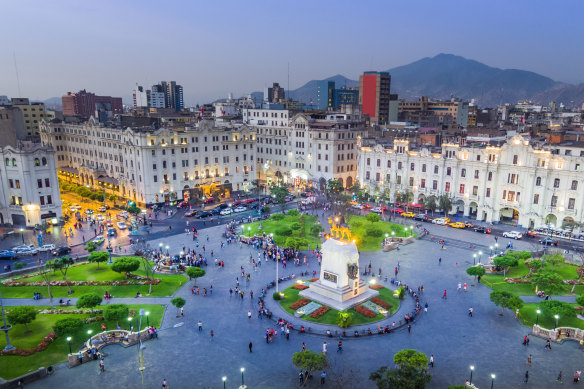
San Martin square in LIma, Peru.Credit: iStock
No South American city can compete with Rio or Buenos Aires, but Lima, the once dishevelled and derided capital of Peru has become much more than a hurried stopover on the way to Machu Picchu.
For a start, the former capital of Spanish America has a rich history, with gold-laden churches, palaces, plazas and convents to prove it. More importantly, you’ll find superb collections of Incan and other pre-Columbian treasures in its museums. Apart from that, though, Lima is undergoing a renaissance that has seen neighbourhoods spruced up and enlivened. Former fishermen’s village Barranco is an arty creative hub and has an energetic nightlife. Upmarket San Isidro is full of parks. Pueblo Libre has renovated colonial houses, good restaurants and great museums.
Most of all, Lima’s culinary scene is a standout. The city is filled with hip eateries serving trendy Peruvian cuisine that fuses international influences. Central was voted one of the World’s 50 Best Restaurants for 2023, and Carnaval one of the World’s 50 Best Bars. See peru.travel
Smallest (and most interesting) capital
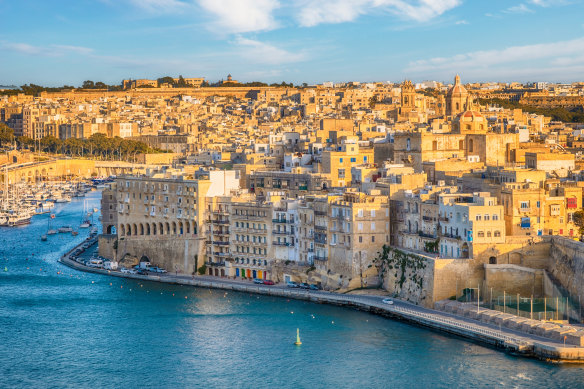
Valletta: You’ve got to love a capital that makes you feel you have a walk-on part in Game of Thrones.Credit: iStock
Some island-nation capitals are even smaller, as is Vaduz, Liechtenstein, but with a population of just 6000, Valletta, the Maltese capital, is a heritage whale among these minnows. What’s more, most capitals are a layered compendium of competing styles and statements. Valletta remains a barely changed fortified Renaissance town, and the bold vision (if also swansong) of the Knights of St John. Check out the Grand Master’s Palace – severe on the outside, sumptuous within – and magnificently decorated St John’s Co-Cathedral, its floor emblazoned with 300 coats of arms. Stroll around sea-gazing bastions lined by gardens, and admire the battlemented wonder of Grand Harbour.
You’ve got to love a capital that makes you feel you have a walk-on part in Game of Thrones. For all its masculine military history, Valletta is soft and charming, too. It has shadowy streets made for strolling, frothing palm trees, stone cherubs flying up walls and golden light. It has an absorbent, tolerant culture: Arabic-based language, Italianate food, French and British influences. Wonderful. See visitmalta.com
Most surprising provincial capital
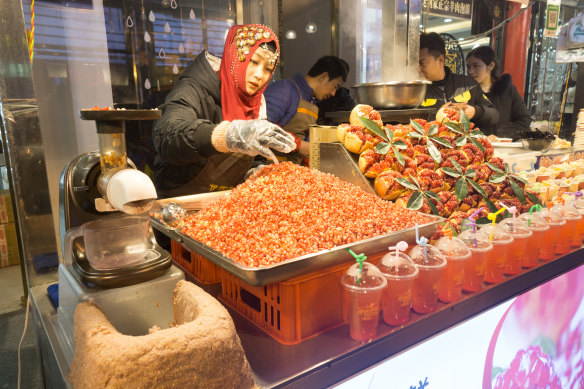
In Xian’s Muslim Quarter stalls sell pomegranate juice. Credit: iStock
Among 22 mainland Chinese provincial capitals only Chengdu, Hangzhou and Xian tend to be on tourist itineraries and, while Shaanxi’s capital, that being Xian, is well-known, it’s only for one thing: the 2000-year-old mausoleum of the first Qin emperor with its life-sized terracotta warriors. But who doesn’t hope for a capital that offers something unusual? Sometimes we’re after the stereotypes, but at other times we’re happy to have our assumptions challenged. Xian does just that.
Eleven dynasties used it as their national capital, but today the Muslim influence is what stands out. Below the well-preserved city walls, the Muslim Quarter dissolves into alleyways of wooden houses that give it the air of a country town. Hidden in the tangle is the Great Mosque, founded in 742 and a disconcerting hybrid of Chinese temple architecture and Islamic decorative motifs, whose minaret resembles a tiered pagoda. The Hui minority run the restaurants and street stalls. No pork stir-fries here, but rather lamb skewers, rich mutton soup, traditional hamburger-like steamed buns, and dried fruit. All finger-licking good and testament to the multicultural richness found in all good capitals. See goshaanxi.gov.cn
Most underrated European capital
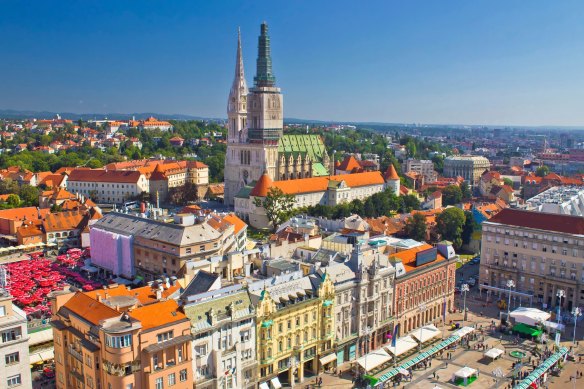
You won’t have to fight for space in Zagreb.Credit: iStock
Here’s what we like: capitals without pretension, where you get everyday life, and which haven’t been taken over by tour groups. While millions flock to the dead city Dubrovnik, Zagreb is where you need to be to enjoy Croatia’s true charm and energy. It isn’t Madrid or Paris. You aren’t going to be knocked out by cultural wonders.
Come in the summer, sit in the sun on park benches and restaurant terraces, at beer-hall tables and market stalls. You won’t have to fight for a spot. You won’t have to eat bad, expensive tourist food. While away the time. Pop into queue-less and quirky little museums. Wander the old town. Watch soccer matches on big screens in town squares. Admire statues of people you’ve never heard of. This is a capital that showcases its nation quietly. After centuries of foreign control, Zagreb has emerged as the confident, spirited capital of a new country that has found its modest place in Europe, and seems happy with it. See croatia.hr
Biggest African capital
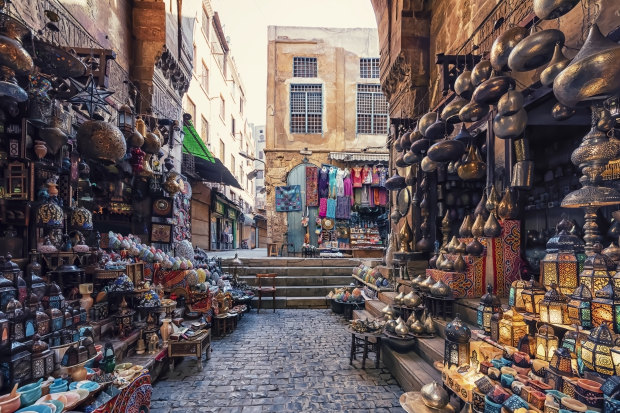
Cairo isn’t beautiful, but you can’t fault its energy and atmosphere, and the sense of history that greets you in its old town.Credit: iStock
Some capitals are well-known by name, yet the depth of their history and culture goes overlooked. Cairo, the Egyptian capital, with a population of nearly 23 million, is one of the world’s longest inhabited capitals under various guises, but King Tut’s treasures and the nearby pyramids grab all the attention Yet Mar Girgis (St George) district has a dozen Coptic churches dating from the earliest days of Christianity, and Cairo’s medieval flourishing and later Ottoman era have provided it with a rich Islamic heritage.
This crowded, dusty, ramshackle capital isn’t beautiful, but you can’t fault its energy and atmosphere, and the sense of history that greets you in old Cairo, where mosques, madrasas, caravanserais and covered bazaars huddle under the looming bulk of a 12th-century citadel built by the great sultan Saladin. This is no prim tourist showcase, except in the recently refurbished Museum of Islamic Art. Plunge into raucous streets, markets and shops hung with brass lamps, and coffeehouses adrift in shisha smoke. This is a capital to experience, not just see. See experienceegypt.eg
Most agreeable regional capital
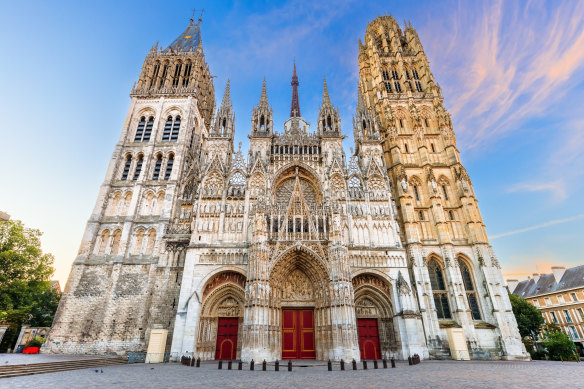
Rouen Cathedral in Normandy, France.Credit: iStock
Despite stiff competition in French regional capitals – Strasbourg, Bordeaux, Lyon – Rouen’s small-city charm, venerable history and ridiculous French-ness give it the edge. Sometimes we just want every stereotype met in a capital, and Rouen provides. The capital of Normandy has gnarly half-timbered houses, a knobbly cathedral much painted by Monet, buildings still peppered with WWII shrapnel, scruffy-chic students, street stalls selling sunflowers, and cafes spilling out to cobblestone streets.
The markets are marvellous, of course. You can buy glazed pear tarts, plump ducks, Camembert, and Normandy apple cider. Rouen also has a church dedicated to St Joan of Arc. Touchingly, locals leave bunches of daffodils on the spot where France’s patron saint of France was burned alive by the English in 1431. Best of all, life goes on here. The Gothic courthouse is still in use; wool merchants’ chapels and H&M outlets compete. Good on Rouen. It’s crammed with history, but no preserved, medieval tourist Disneyland. See visiterouen.com
Most evolving capital
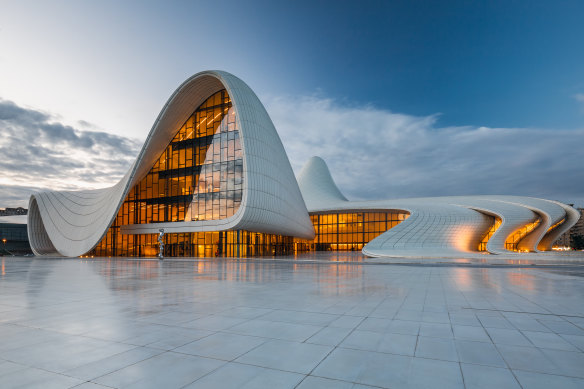
Baku’s Heydar Aliyev Centre houses a conference hall, gallery and musem and was designed by Zaha Hadid.Credit: iStock
At 28 metres below sea level, Baku, Azerbaijan, is the world’s lowest-lying capital, but it has soaring ambitions and nowhere is the contrast between ancient and modern – not to mention Europe and Asia – more striking. This is a capital that changes almost before your eyes. The old is UNESCO-listed sandstone city Icheri Sheher, with its 12th-century walls, Maiden Tower, narrow alleys, Shirvanshah’s Palace and graceful stone mansions, all pitted with age but now carefully restored and looked after.
The new, fuelled by oil money, is triumphantly announced by three huge glass Flame Towers, particularly fabulous at night when a light show is projected on their facades. It’s only the start of the splendid and startling contemporary architecture, the best of which might be the rolling white wave of the Heydar Aliyev Centre, designed by Zaha Hadid. Baku Boulevard and Crescent Bay, meanwhile, show why this city has been called the Dubai of the Caucasus. Glittering skyscrapers, malls and luxury hotels mushroom along the Caspian Sea, and promenades hum. See azerbaijan.travel
Greenest capital
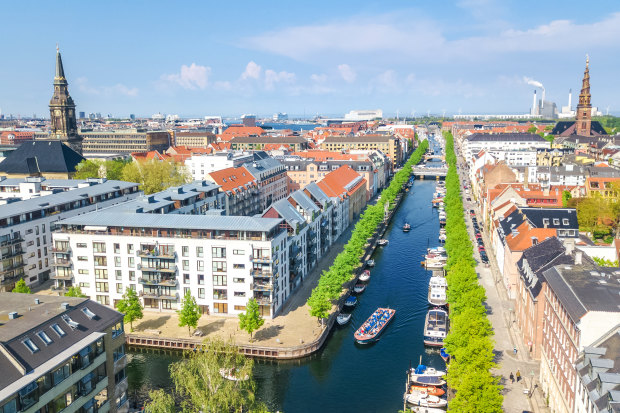
Copenhagen is setting out to be a leader in sustainability.Credit: iStock
We could all name capitals that present society’s faults instead of its aspirations: pollution, crime, chaos, lethargy. Copenhagen, Denmark’s capital, strives to be liveable, tolerant, educated, safe and socially conscious. Now it’s setting out to be a leader in sustainability, too. It already was in some ways, with its modest lifestyle, abundant green spaces and devotion to the bicycle; half of all residents cycle to work or school along hundreds of kilometres of dedicated bike lanes and bridges, and that’s despite excellent public transportation.
Major recent projects are only increasing its eco-credentials. New neighbourhoods Nordhavn and Orestad have produced the world’s most sustainable housing projects, and Sankt Kjelds is being transformed by rooftop community gardens. Visitors can get in on the act. Most of Copenhagen’s hotels are now eco-certified, a quarter of all its food is organic, and restaurants and shops promote their climate credentials. But don’t worry: Copenhagen is far from sanctimonious. This is a hip, happy capital of relaxed attitudes and considerable style. See visitcopenhagen.com
Most refreshing provincial capital
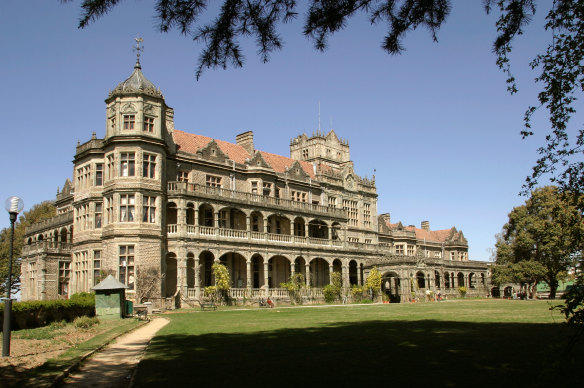
Shimla hill station in India.Credit: Alamy
Most of us would be hard-pressed to name India’s provincial capitals, and many are of scant interest to overseas visitors. But when you’re ready to take a break from India’s heat and big-city kerfuffle, little Shimla provides fresh air and soul-settling mountains. One of the joys of this old hill station – former summer capital of the British Raj, and current capital of northern state Himachal Pradesh – is getting there on the narrow-gauge Kalka-Shimla Toy Train, which takes you chugging into the Himalayan foothills through flower-scattered meadows.
Fortunately, you don’t have to do anything when you arrive. Join the social shuffling along The Mall and The Ridge, where people gossip, ponies clop and bands tootle. Admire British colonial buildings and views of snow peaks. Clamber up Prospect Hill for more views. Walk to Jakhu “monkey” Temple to see the Himalayas ranged like pavlova across the valley. Then plunge into bazaars and enjoy the sight of Indian tourists enjoying themselves. If only all capitals were this relaxing. See himachaltourism.gov.in
Oldest US state capital
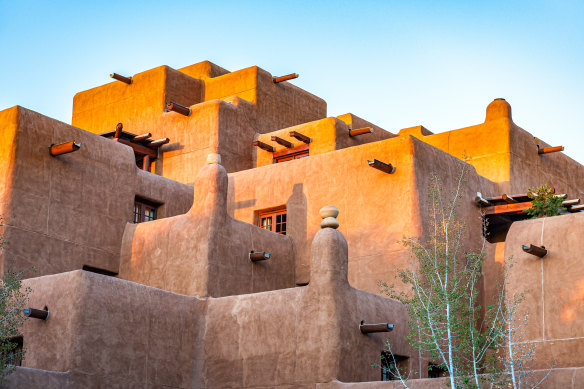
Santa Fe, New Mexico, is famous for its Pueblo-style architecture. Credit: iStock
Santa Fe could well be the nicest US capital too, although admittedly there isn’t much competition. First settled in 1607, New Mexico’s capital is the oldest European-settled community west of the Mississippi. You can tell: Santa Fe has no US-style grid-work of streets, but instead odd-angled and meandering laneways and a collection of (albeit pseudo) Gothic, Romanesque and Pueblo architecture. Its most prominent building is hulking St Francis Cathedral, which morphed out of the little abode chapel dating from 1610 behind it.
A long artistic tradition here stretches from Native American to Hispanic and Western, with a half-dozen good museums to prove it. The one dedicated to modernist painter Georgia O’Keeffe, who was inspired by New Mexico’s stark but striking landscapes, is especially good. Santa Fe is also a great base for more surrounding history: Native American pueblos and ruins, a national monument and national park, Los Alamos where the atom bomb was developed and the scenic and fascinating High Road to Taos. See santafe.org
Most delectable state capital
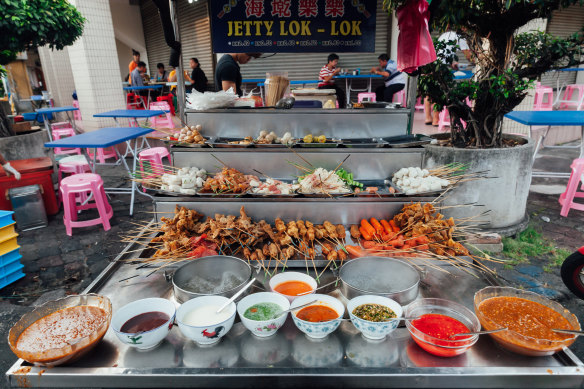
Steamboat stall at the Kimberley Street Food Market in George Town, the capital of Penang in Malaysia.Credit: iStock
A capital shouldn’t serve up some sanitised version of “national” cuisine. It should present food in all its confused glory as the intangible heritage and living culture of all the many people who’ve influenced its past and present. George Town, capital of Penang in Malaysia, has a short but more convoluted history than most: its influences are Malay, British, Chinese, Indian, Indonesian and southern Thai. That gives it multiple religions, architectural styles and cultural observances, and most of all a rich, inventive cuisine.
Whether you’re hunkering on a red plastic stool at a street stall, sweating in a hawker centre, or sedate in an upmarket restaurant, the choices are endless. Tuck into noodles thin, flat, fried or slurped from soup; devour murtabak, rojak, oyster omelettes, plump dumplings and colourful curries. Get familiar with Nonya cuisine, a fusion of Malay and Chinese including dishes such as pork stew, fish-head curry and laksa, which in Penang comes in a distinctive spicy fish soup. Delicious. See mypenang.gov.my
Most soul-searching capital
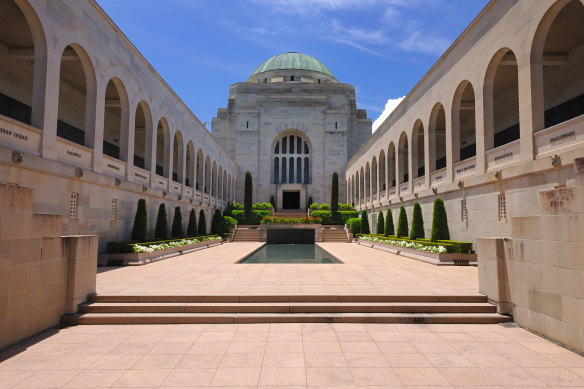
The Australian War Memorial.Credit: iStock
Canberra is dismissed as the haunt of bureaucrats and politicians, but we ought to appreciate its relaxed vibe, great food scene and outdoor life. Those things in themselves are very Australian, on top of which Canberra is better than most capitals at showcasing the national psyche, and distilling – or perhaps still pondering over – the national character in exhibits that range from Indigenous art to space exploration.
The Australian War Memorial gives insight into the Anzac spirit, especially in its gallery devoted to the Gallipoli campaign that helped define the Australian sense of self. The National Museum of Australia features everything from cricket to agricultural history, the demise of the Tasmanian tiger to the latest in Australian scientific research, while the National Portrait Gallery has familiar faces in painting and sculpture. And for a light-hearted exploration of Australian culture, you can listen to versions of Waltzing Matilda, find out about Ned Kelly and ogle at costumes and memorabilia from iconic Australian movies at the National Film and Sound Archive. See visitcanberra.com.au
Capital gains and losses
Highest national capital La Paz, Bolivia
Lowest national capital Baku, Azerbaijan
Youngest national capital Nusantara, Indonesia (still under construction)
Oldest national capital Damascus, Syria
Highest per cent of state population in an Australian capital Perth
Lowest per cent of state population in an Australian capital Hobart
Most populous US state capital Phoenix, Arizona
Least populous US state capital Montpelier, Vermont
Five often confused capitals
Istanbul for Ankara
Turkey’s capital isn’t a patch on its biggest city, though the newer capital does have an ancient citadel and an important 15th-century mosque. But like all good capitals, Ankara has excellent museums. The Museum of Anatolian Civilisations is an absorbing romp through millennia of history, with particularly astonishing Hittite and Assyrian artefacts. See goturkiye.com
Rio for Brasilia
Brasilia was founded in 1960 and has a long way to go to exceed the reputation of former capital Rio. For some, this supposed urban utopia is soulless, but for those keen on 20th-century architecture its government buildings, museums and cathedral are a pop-up encyclopedia of some of the world’s best modernist buildings. See visitbrasil.com
La Paz for Sucre
Even some politicians think La Paz is the capital of Bolivia, since that’s where parliament convenes. Constitutional capital Sucre, which sits in a pretty valley, is far more attractive. A prestigious university gives it vibrant student life and its elegant old town, centred on one of South America’s most gracious plazas, is UNESCO listed. See boliviatravelsite.com/sucre turismosucre.com
Johannesburg for Pretoria
No wonder we’re confused: South Africa has no legally defined capital. Several cities share functions: Jo’burg isn’t one of them though Cape Town does. Pretoria, considered the administrative capital, is gracious and leafy but you won’t find a lot to excite you apart from some significant colonial-era buildings and its famous springtime eruption of jacaranda blossoms. Cape Town is the legislative capital and Bloemfontein its judicial capital. See southafrica.net
Marrakesh for Rabat
Although the capital only since 1912, Rabat has a 900-year history and World Heritage medina, though it lacks the size and character of those in Marrakesh or Fes. Still, Rabat, which is angling to become Morocco’s cultural centre, has a sea-gazing location, leafy avenues and a riverfront adorned with dazzling contemporary architecture. See visitrabat.com